Traditional Chinese Medicine Treatment for Cancer
Professor Feng Yibin
Dean and Professor, School of Chinese Medicine, University of Hong Kong
Host: Ms. Wong Wing Chen, Janet
Information Compilation : Ms. Bernadette Cook, Ms Rita Liaw
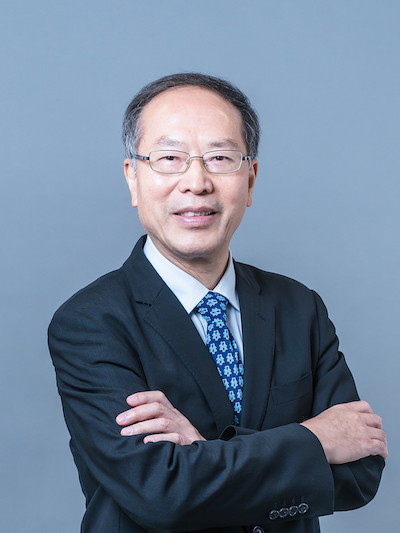

Introduction: Traditional Chinese medicine treatment has a long history, and there have been records of treating cancer since ancient times. In this interview, Professor Feng Yibin discusses with us how traditional Chinese medicine treats cancer (with a detailed explanation using liver cancer as an example). He also shares the latest developments in the integration of Chinese and Western medicine.
Part One - School of Chinese Medicine, University of Hong Kong
Part Two - Macroscopic view of TCM treatment for cancer
Part Three - How TCM treats cancer
Part Four - An example of how TCM treats liver cancer
Part Five - The importance of "Evidence-Based Medicine"
Part Six - Integration of Chinese and Western Medicine
Part One - School of Chinese Medicine, University of Hong Kong
Wong: Many cancer patients want to receive traditional Chinese medicine treatment while receiving Western medicine treatment. Today I am pleased to invite Professor Feng Yibin, Dean of the School of Chinese Medicine, University of Hong Kong, to talk to us about this issue. Thank you, Professor.
Feng: You're welcome.
Wong: First of all, can you introduce us to the work of the School of Chinese Medicine at the University of Hong Kong? Especially the services provided for cancer patients.
Feng: Sure, the School of Chinese Medicine at the University of Hong Kong has been established for more than 20 years, and its medical education and research have developed comprehensively, and a complete undergraduate, master's and doctoral education system has been established:
- In terms of research, a series of studies have been carried out in tumors, liver and kidney and metabolic diseases, pain, mental and neurodegenerative diseases, cardiovascular diseases, immune and infectious diseases, etc., have their own characteristics and competitive edge; and
- In terms of clinical education and clinical services, the University of Hong Kong has multiple clinical bases, including six tripartite clinical teaching and research centers (established by the University of Hong Kong, non-governmental organizations (NGOs) and the Hong Kong Hospital Authority), two hospital Chinese medicine departments (University of Hong Kong Shenzhen Hospital and Hong Kong Gleneagles Hospital) and two clinical teaching and research centers directly under the School of Chinese Medicine of the University of Hong Kong. In these clinical bases, we have launched Chinese medicine services for cancer patients, especially in our directly affiliated teaching and research centers, we have established the earliest cancer specialty outpatient clinic in Hong Kong, providing daily Chinese medicine services for cancer patients, combining cancer-related education and research work, and carrying out prevention and treatment work for cancer research in Chinese medicine and integrated traditional Chinese and Western medicine.
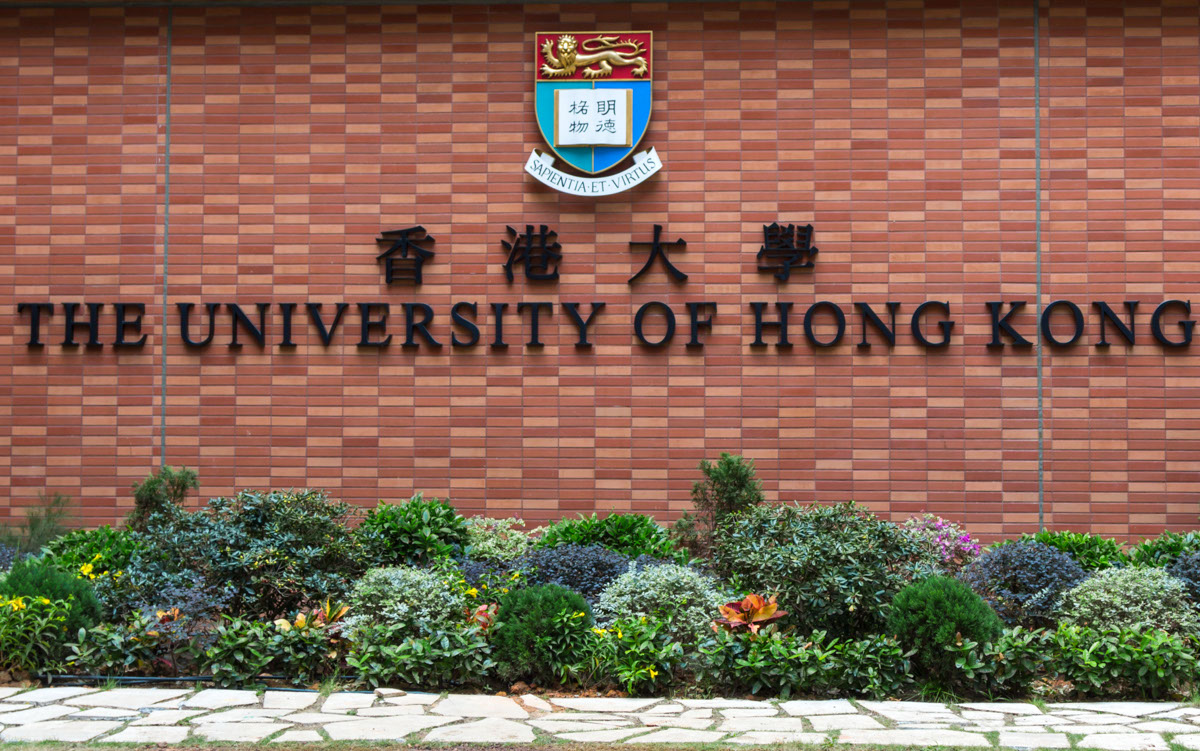
Part Two - A Macro View of Traditional Chinese Medicine Treatment for Cancer
Wong: Can you explain to us how to view cancer from the perspective of Chinese medicine?
Feng: This requires an understanding of cancer in Western Medicine perspective and through comparison, we can also better understand the concept of cancer in Chinese medicine.
In the view of Western medicine, cancer is a large category of diseases with malignant proliferation in different tissues and organs. There are different characteristics of malignant cells in different tissues and organs, but the common characteristic is that cancer cells grow rapidly, uncontrollably, and will spread to the surrounding tissues and organs. The characteristics of cancer are defined based on histology, molecular biology, and microscopy techniques. No matter how laboratory and imaging diagnostic techniques progress, the gold standard for cancer diagnosis must be the diagnostic standards of hematology or histopathology. The current approach of precision diagnosis is based on this foundation through molecular genetic diagnosis and other auxiliary diagnoses and data analysis.
Historical Documents on Traditional Chinese Medicine Treatment for Cancer
The definition of modern cancer in Western medicine is a matter of nearly a hundred years, but this large category of diseases should be as long as human history. Both the East and the West have recognized certain characteristics of cancer from different aspects. In the West, around 400 BC, the father of Western medicine, Hippocrates, called dangerous tumors "Karkinoma". The English word for cancer, ‘cancer’, comes from the Latin word ‘cancrum’, meaning crab, describing the shape and growth of cancerous tumors.
And Chinese medicine has recognized tumors for at least three thousand years:
・The oracle bone inscriptions in Yin Ruins(殷墟) already have records of "tumors", including benign tumors;
・More than two thousand years ago, the "Huangdi Neijing"(《黃帝內經》) already described fibroids, intestinal tumors, and old tumors (referring to tumors formed over a long period of time);
・"Zhou Li•Tian Guan"(《周禮•天官》) recorded the specialist doctors for tumors, describing that there were "eight lower-ranking people"(下士八人) in the Zhou Dynasty who were in charge of treating tumors, ulcers, metal tumors, and broken tumors. These so-called tumors refer to diseases of cancer ;
・The medical book of the Western Han Dynasty recorded "curved tumors"(曲腫), those that are uneven like mountain rocks are called Chang(昌), which is interchangeable with the word "rock" (read yán)(岩), thus already referring to malignant tumors; and
・By the 12th century, the "Wei Ji Bao Shu" (《衛濟寶書》)of the Song Dynasty used the word "cancer" (癌)for the first time to describe the disease.
The diseases related to cancer in different tissues and organs recorded in Chinese historical documents include thyroid cancer(石癭), esophageal cancer and stomach cancer(噎膈), breast cancer(乳癌), various abdominal tumors including benign tumors(癥瘕), lung cancer(肺積), melanoma(黑疔), skin cancer(翻花瘡), lip cancer(繭唇), intestinal cancer(腸覃), rectal cancer and anal cancer(鎖肛痔), and cancer cachexia(失營和失榮), etc. These disease names in traditional Chinese medicine are all based on the clinical manifestations of the patients. When diagnosing these diseases, they are all late-stage cancers.
Current situation
Obviously, the understanding and diagnosis of cancer, both ancient and modern, Chinese and Western medicine, all start from the clinical manifestations of the patient.
But modern Western medicine is disease-based treatment, precise diagnosis and treatment from a microscopic, molecular and cellular perspective.
Modern Chinese medicine is syndrome differentiation treatment, from a macroscopic, naked eye observation perspective. It should be combined with the diagnosis of modern Western medicine. The combination of disease differentiation and syndrome differentiation (辨病與辨證相結合)(not differentiating the disease of Chinese medicine, but differentiating the disease of Western medicine) is necessary in order to achieve the integration of Chinese and Western medicine, the combination of the whole and the local, thus bringing out the strengths of Chinese and Western medicine.
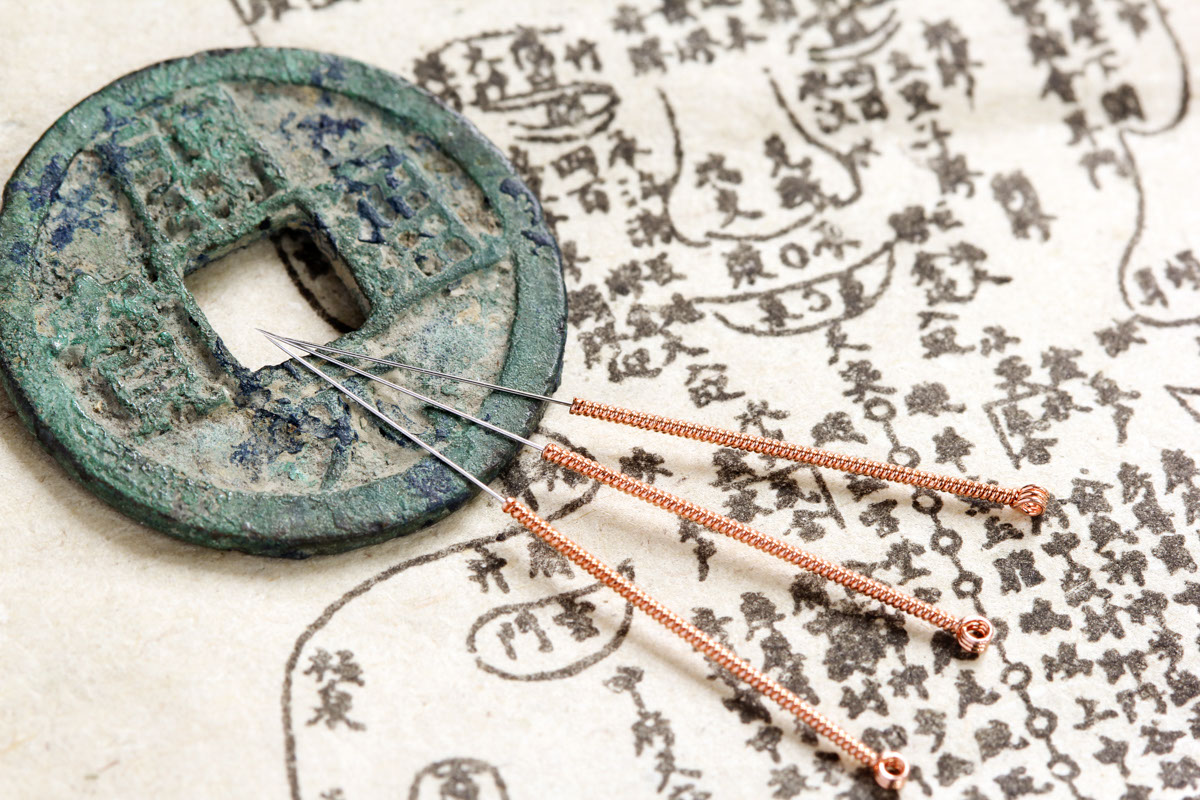
Part Three - How Chinese Medicine Treats Cancer
Wong: Everyone must be very concerned about treatment. Shall we talk about various aspects based on the journey of cancer patients?
Feng: Yes, cancer used to be a terminal illness, but now it is often a treatable disease. Even for late-stage cancer we can alleviate symptoms, improve quality of life, live with cancer, prolong life, and treat cancer as a chronic disease.
In traditional Chinese medicine treatment, we can't avoid making reference to Western medicine treatment. We must combine both. In general, traditional Chinese medicine can be viewed from three major aspects:
- Improve the overall condition, enhance the ability to fight cancer, the so-called strengthening the foundation and conditioning the body;
- Reduce toxicity and enhance efficacy, that is, reduce the various adverse reactions of Western medicine treatment, and enhance the effect of Western medicine treatment; and
- Anti-cancer and palliative treatment, that is when it is late-stage patients; the patients are too old, or when Western medicine has given up anti-cancer treatment, traditional Chinese medicine can target symptoms such as fatigue, pain, anxiety, insomnia, constipation, sweating, etc., for palliative treatment, while exerting the comprehensive effect of anti-cancer coping.
In the past ten years, extensive research has been conducted locally and abroad on these three major aspects, from basic, translational to clinical, and there is a lot of scientific and clinical evidence. What I want to emphasize is that the combination of traditional Chinese and Western medicine in the treatment of cancer can be done in the early, middle and late stages of cancer —-not just when Western medicine has given up active anti-cancer treatment (or late-stage palliative treatment).
According to the holistic concept of traditional Chinese medicine, syndrome differentiation and treatment as well as modern research, traditional Chinese medicine treatment can achieve multiple effects in cancer handling such as health preservation, health care, treatment, and recovery, thus achieving comprehensive effects such as anti-cancer, improving quality of life and prolonging life.
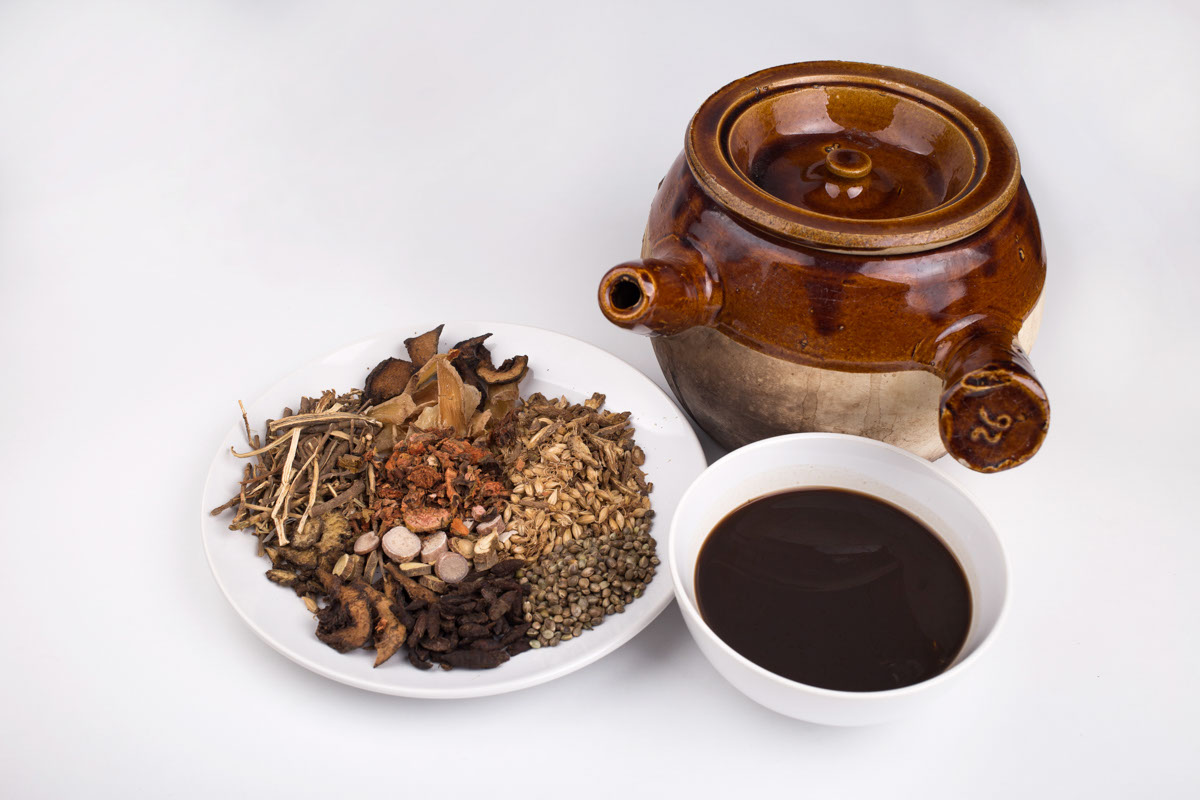
Part Four - Using Liver Cancer as an Example to Explain How Traditional Chinese Medicine Treats Cancer
Wong: In order to discuss more specifically the role of traditional Chinese medicine in the treatment of cancer, we shall use a common cancer as an example, that is liver cancer.
Feng:
Western medicine treatment of liver cancer
Looking at the latest data in 2020, the total cancer mortality rate worldwide is the third for liver cancer, and the cancer incidence rate ranks sixth. The mortality rate of liver cancer in Hong Kong is also the third, and the incidence rate is the fifth. Primary liver cancer refers to cancer that occurs in the liver. The liver cancer that occurs in the liver cells of the liver lobe is called "hepatocellular carcinoma", accounting for about 95%.
The liver cancer that occurs in the bile duct epithelial cells is called "cholangiocarcinoma", accounting for about 5%. Cancers of other organs, such as breast cancer, colon cancer, lung cancer, etc., that metastasize to the liver are called secondary liver cancer. Liver cancer is divided into 4 stages. Simply put, stages 1 and 2 can be said to be early liver cancer, while stages 3 and 4 are late liver cancer.
The so-called three-step liver disease development refers to hepatitis, which further develops into cirrhosis, and then further develops into liver cancer.
Western medicine uses surgery, chemotherapy, radiotherapy, targeted therapy, and tumor immunotherapy according to the stage of liver cancer. Among all cancer treatments, liver cancer has the largest number of treatment methods, but the effect is limited because it has the pathological basis of hepatitis or cirrhosis and is prone to recurrence.
Traditional Chinese medicine treatment of liver cancer and combined with Western medicine treatment
- Liver Qi stagnation(肝氣鬱結): Soothing the liver and strengthening the spleen, Bupleurum liver-soothing powder plus Qi-strengthening and spleen-strengthening products;
- Qi stagnation and blood stasis(氣滯血瘀): Promoting Qi and activating blood, removing stasis and reducing accumulation, Fuyuan Huoxue Tang() plus blood-breaking and tumor-reducing products;
- Damp-heat accumulation(濕熱聚毒): Clearing heat and benefiting the gallbladder, purging fire and detoxifying, Yinchenhao Tang plus Xihuang pills;
- Liver Yin deficiency(肝陰虧虛): Nourishing blood and softening the liver, cooling blood and detoxifying, Yiguan decoction plus cooling blood and detoxifying products
The above are general Chinese medicine treatments. In the past ten years or so, we have combined the TMN staging of liver cancer to carry out TCM syndrome differentiation treatment:
Diagnosis—Combination of disease and syndrome: Distinguish Western medicine's disease, distinguish Chinese medicine's syndrome (according to Western medicine's disease (confirmed hepatocellular carcinoma or cholangiocarcinoma) , TNM staging, distinguish Chinese medicine's syndrome(證型)). The key points of syndrome differentiation are dampness, water, stasis, poison, wind, heat, cold, depression, deficiency (Qi, blood, Yin, Yang).
Treatment—Staging treatment: Syndrome differentiation and treatment for early, middle, and late stages. The key is the right medicine for the right syndrome, such as if it is deficiency syndrome then we strengthen the foundation and nourish the origin, regulate the organs Qi, blood, Yin, and Yang. For early, middle, and late stages patients(those with strong positive Qi) we will try to actively fight cancer; for late stages we will aim to alleviate symptoms. The main syndrome type of syndrome differentiation is liver, kidney, spleen deficiency, dampness, stasis, heat, and poison intertwined. The main prescription is "San E Liu Jun Tang" (三莪六君湯)combined with "Gegen Qinlian Tang"(葛根芩連湯) (or "Huanglian Jiedu Tang") (黃連解毒湯)plus Angelica, Clitoria ternatea, Rehmannia, Goji berries, Buxus microphylla, and Euphorbia pekinensis, etc. We can also adjust according to symptoms:
・Liver depression and Qi stagnation add Sini San;
・Liver meridian damp-heat add Lysimachia, Artemisia capillaris, and Gentiana scabra;
・Liver meridian real heat add Prunella vulgaris, Gardenia jasminoides, and Imperata cylindrica;
・Liver meridian wind evil add Stephania tetrandra and Paeonia suffruticosa, kidney meridian damp-heat add Anemarrhena asphodeloides and Phellodendron amurense; and
・Liver meridian water dampness and blood stasis add Wuling San with heavy use of three, E, and turmeric, remove Wanchen and Cao.
If there is bone metastasis, use the self-created prescription "Er Gu Liu Xian Tang".
Monitoring—Regular Chinese and Western medicine follow-up visits
Recovery—Strengthen the foundation and nourish the origin, regulate the organs Qi, blood, Yin, and Yang.
Handling after recurrence—Still based on the combination of Chinese and Western medicine, combining disease differentiation and syndrome differentiation, staging treatment, combining active anti-cancer and palliative treatment.

Part Five—The importance of "Evidence-Based Medicine"
Wong: Hong Kong is a Chinese society, and the vast majority of cancer patients are hopeful to use traditional Chinese medicine to treat or alleviate their diseases. But a common difficulty is the "lack of a clear scientific basis", whereas Western medicine is very st "evidence-based research".
Is traditional Chinese medicine now moving towards "evidence-based medicine"?
Feng: I strongly agree with the importance of "evidence-based medicine", and in-depth research is where the hope for treating diseases (including cancer) lies.
Western medical treatment perspective
In terms of drug treatment, Western medicine has provided excellent scientific and clinical evidence. First, let's briefly talk about the three milestones in the research of drug treatment in Western medicine:
- Before 2000, it was the development and application of various cytotoxic chemotherapy drugs, which are still under continuous research and development;
- After 2000, it was the development and application of various targeted drugs; and
- After 2011, it was the development and application of various tumor immunotherapy drugs. The 2018 Nobel Prize in Medicine and Physiology was awarded to James P. Allison, a professor in the Department of Immunology at the University of Texas MD Anderson Cancer Center, and Tasuku Honjo, a professor in the Department of Immunology at Kyoto University in Japan, for their outstanding contributions to tumor immunotherapy.
Traditional Chinese medicine treatment / combination of Chinese and Western medicine perspective
In the past, in the treatment of cancer we talked about "supporting the healthy and eliminating the evil"(扶正祛邪): Western medicine is good at "eliminating the evil"(祛邪)while traditional Chinese medicine is good at "supporting the healthy and regulating"(扶正調理). Nowadays due to the emergence of immunotherapy, Chinese and Western medicine can better understand each other—— in terms of philosophy as well as treatment.
What we need to do is to find scientific and clinical evidence for the traditional therapies of Chinese medicine, and to carry out targeted or precise treatment for different tumors.
Let's take a look at the single and compound prescriptions of Chinese medicine.
Single and compound prescriptions(單方和複方)
Currently, due to the complex material basis and unclear mechanism of anti-cancer traditional Chinese medicine (TCM), its clinical application is limited. Many past studies on TCM have focused on the cytotoxic effects on tumors, which are generally not as effective as existing Western cytotoxic anti-cancer drugs. However, there are many clinical cases showing the effectiveness of TCM in treating of tumors. One of the challenges in anti-tumor TCM research is hence to develop experimental models that can replicate the effects of large doses and long-term medication in clinical settings, and gain recognition from the academic community, especially in terms of evaluation methods.
Combining years of clinical and research experience, we propose that the focus of TCM research, including ethnic medicine(民族醫藥), in the field of cancer should be on prevention, improving quality of life, treating recurrence, developing drugs and new treatment methods for late-stage cancer, rather than adding another alternative chemotherapy drug to the existing list of cytotoxic drugs.
Over the past decade or so, we have conducted systematic research on small nucleic acids, tumor microenvironment, macrophages, and TCM such as Coptis chinensis and its compounds, and published a series of international papers. Especially in the areas of liver cancer, pancreatic cancer, colorectal cancer, and lung cancer, we have demonstrated the anti-tumor metastasis and related mechanisms of Coptis chinensis and its compounds and other TCM.
I deeply feel that new targets, tumor stem cells, inflammation, and tumor microenvironment should be the focus of TCM anti-cancer research. From a pathological perspective, without "inflammation", there would be no disease. The evolution of most organ diseases is basically a pathological process of "inflammation-fibrosis-cancerization", and inflammation is always involved. In the past two decades, targeted anti-cancer drugs and immunotherapy have played an important role in the treatment of tumor growth and metastasis in patients with recurrent and late-stage cancer. In the Greater China region and other Asian countries, TCM also plays an important role in patients with late-stage cancer.
But the bottleneck of the research is the stability of the drug, the dosage of the drug, the timing of the drug, the mechanism of action, etc. My research team, through more than ten years of research, has proposed an effective experimental method and technical platform for compound formulas, namely the integrated model of omics and bioinformatics analysis, to identify the active substances and new therapeutic targets of single-flavored Chinese medicine and compound Chinese medicine—— from cells, animals to humans, and to carry out clinical trials to obtain clinical evidence.
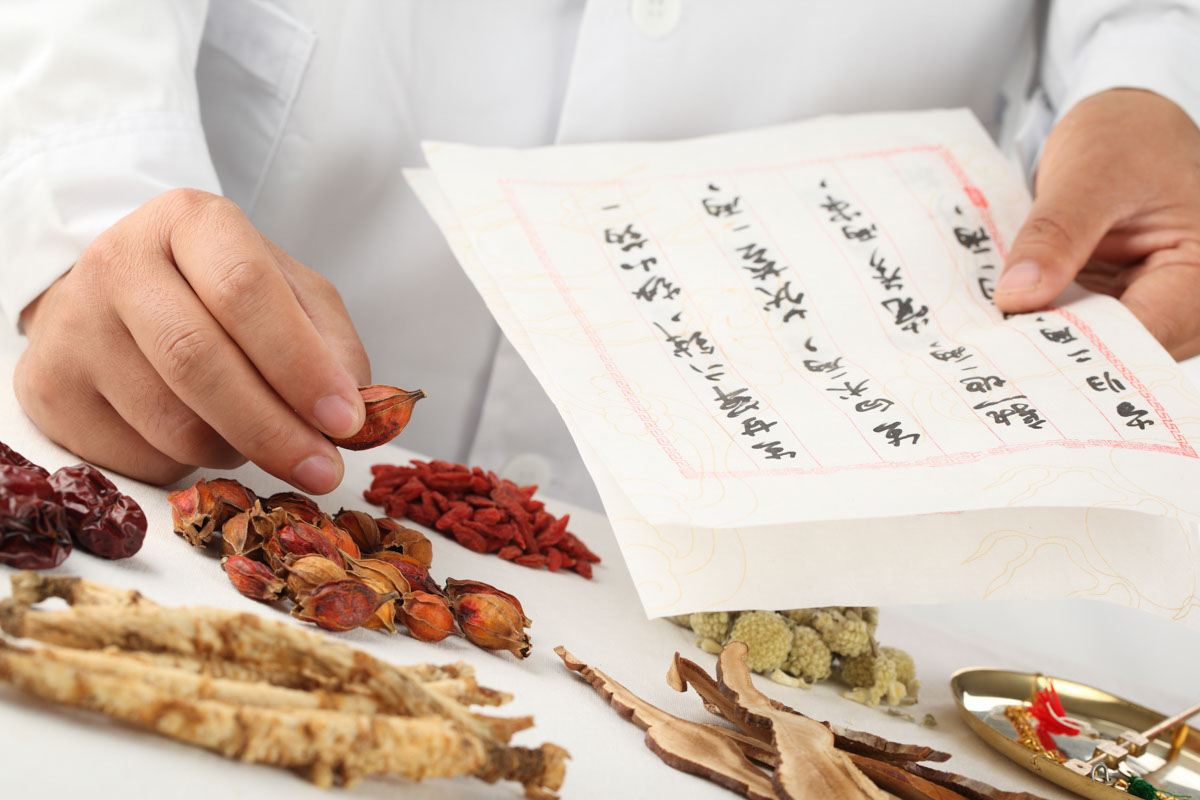
Part Six - Integration of Chinese and Western Medicine
Wong: There is more and more talk about the integration of Chinese and Western medicine, can you talk about this topic? In terms of cancer treatment, how can we achieve good integration of Chinese and Western medicine?
Feng: In Asia or the Greater China cultural circle, we call it the integration of Chinese and Western medicine (East-West integration), while in Europe and America, it is more broadly referred to as a kind of complementary or alternative medicine for the unmet medical needs of modern Western medicine. Regardless of the name, it is about the integration of Eastern and Western medicine, which is a major issue of concern to the world.
Research and application are being or have been carried out extensively both domestically and abroad. Taking the development of anti-cancer drugs as an example, research covers chemotherapy drugs, targeted drugs, tumor immunotherapy, targeting at the cancer cells themselves, tumor microenvironment or the host's overall immunity.
Cancer basic research and clinical treatment continue to bring new inspirations, stimulate new anti-cancer drug development, but the common challenges are still how to deal with:
- The generation of side effects and toxic effects;
- The diversity of tumor cells;
- The generation of drug resistance; and
- Tumor recurrence and metastasis, etc.
In the face of these challenges, I believe that the ancient wisdom and modern innovation of Chinese medicine can make a significant contribution.
Personal treatment perspective
Wong: In recent years, Western medicine often talks about "personalized medicine", which means precision. For example, in the treatment of lung cancer, unlike decades ago when every patient was treated with the same chemotherapy drugs, now there are many different methods, such as various targeted drugs, chemotherapy and immunotherapy. This is because lung cancer actually comprises many different types of diseases—-the only commonality being the uncontrollable division of cells.
And Chinese medicine has always emphasized personalization.
From this perspective, what are the differences and similarities between Chinese and Western medicine?
Feng: Indeed, the syndrome differentiation and treatment in Chinese medicine emphasizes individualized diagnosis and treatment. The current hot topic "precision medicine (PM)" is also a kind of individualized medical model for the specific situation of each disease—-from diagnosis to treatment, etc. Therefore, some people say that Chinese medicine actually had individualized diagnosis/ treatment more than two thousand years ago,
But there is a big difference between the individualized diagnosis and treatment of Chinese medicine and the individualized diagnosis and treatment of Western precision medicine - the individualized nature of Chinese medicine is at the macroscopic and vague level, while the individualized nature of Western medicine is at the microscopic and precise level, with the help of molecular diagnosis, combined with the patient's gene testing, molecular analysis or other cell analysis to choose the most appropriate therapy. Both Chinese and Western medicine have their own element of individuality, but there are different philosophical concepts,background and diagnostic and treatment methods behind. If Chinese and Western medicine are to be integrated, we first need to answer some questions on the scientific basis of Chinese medicine, such as what is the nature of meridians; what role do meridians play in individualized treatment?; and what is the essence of the key principle of "different treatments for the same disease, same treatment for different diseases"? The same disease may have different syndromes, and the treatment will be different, while different diseases may have the same syndrome, and the treatment can be the same.
Wong: You mentioned that the individualized diagnosis and treatment of Chinese medicine is at the "macroscopic and vague level", so what methods can be used to further improve it?
Feng: In addition to the major scientific issues mentioned above, we must also study the scientific and clinical evidence of the similarities and differences between Western medicine's disease diagnosis and traditional Chinese medicine's syndrome differentiation. For example, in Chinese medicine in the combat of cancer, there are heat-clearing and detoxifying Chinese medicine, tonifying Chinese medicine, and blood-activating and stasis-removing Chinese medicine, which are different from the pharmacological classification of Western medicine. Then what is the scientific basis of these?
My research team has done some work in this area over the past years. We found that the systems, targets, and signaling pathways of the three types of drugs are different. Firthly heat-clearing and detoxifying Chinese medicine mainly shows anti-inflammatory effects, but each drug has different targets and signaling pathways.
Secondly, combined with the characteristics of tumor biology and modern research on anti-tumor pharmacology, we find that many anti-cancer Chinese medicines do not have strong cytotoxic effects, but they are worth in-depth research in terms of anti-inflammatory, regulating tumor signaling pathways, regulating tumor microenvironment, inhibiting tumor stem cells, and tumor immune regulation.
Finally, the limitations of Western medicine's single chemical component drugs have repeatedly appeared. Multi-component and multi-target drugs may be a solution. Based on the more than two thousand years of medication experience and compound prescriptions of traditional Chinese medicine, in the face of the challenges of tumor drug treatment, Chinese medicine research has found many exciting pharmacological effects and mechanisms. For example: the great success of arsenic and compound Huangdai tablets(黃黛片) developed by Chinese scientists to treat acute promyelocytic leukemia (APL) (In 1957, doctors in France and Norway first mentioned acute promyelocytic leukemia, at that time the patient's survival period was less than a week, now the 10-year survival rate of patients is about 80-90%). Doctors and scientists around the world need to work closely together, via multi-disciplinary research, to develop diagnostic and treatment strategies and specific plans that include the philosophical concepts and technical advantages of Chinese and Western medicine, to benefit mankind.
In general, in the research of Chinese medicine, we must combine the characteristics of traditional Chinese medicine and modern scientific technology for more in-depth and precise research and application. Western medicine is the main, traditional Chinese medicine is the auxiliary.
Wong: In recent years, there has been more and more discussion about the combination of Chinese and Western medicine to treat cancer in Hong Kong, but the scale is still not very large. How can we do better?
Feng: Speaking of the combination of traditional Chinese and Western medicine in cancer treatment, it must be clear that the current trend is mainly Western medicine, supplemented by traditional Chinese medicine. The combination of traditional Chinese and Western medicine complements each other's strengths and weaknesses, because cancer is a complex and difficult-to-treat disease, and the combination of traditional Chinese and Western medicine in research and treatment is particularly important.
As mentioned above, cancers have commonalities. Their common point is that cancer cells grow uncontrollably at the original site and spread and metastasize to the surroundings. However, each type of cancer is different and has its own characteristics and treatment. Even for the same type of cancer, such as lung cancer, there are different types and treatments. Now we talk about precision medicine, cancer is the earliest disease to start precision diagnosis and treatment.
As for how to achieve a good combination of traditional Chinese and Western medicine? I think:
(1) The public level needs to be improved
The general public, traditional Chinese and Western medicine practitioners, and patients need to be familiar with the advantages and disadvantages of traditional Chinese and Western medicine. The purpose of the combination of traditional Chinese and Western medicine is to best utilise their strengths.
(2) The expert level needs to be improved
The combination of traditional Chinese and Western medicine in the treatment of cancer requires the combination of disease identification and syndrome identification. All treatments of Western medicine aim at eliminating, killing or suppressing cancer cells. However, various treatments, such as surgery, chemotherapy, radiotherapy, hormone therapy, targeted therapy, and tumor immunotherapy, have different degrees of adverse reactions. Also over time, drug resistance or tolerance will occur. The identification of traditional Chinese medicine syndromes is to comprehensively judge each patient's overall condition, adverse reactions, and treatment responses based on the different diagnoses and treatments of Western medicine cancer, and use various treatments of traditional Chinese medicine to improve the patient's overall condition, alleviate adverse reactions, and enhance the treatment effect of Western medicine. We also need to master the timing of intake of traditional Chinese medicine treatment to avoid any so called "conflict" between traditional Chinese and Western medicine.
Therefore, a good traditional Chinese medicine cancer specialist must be conversant with both Chinese and Western medicine's diagnosis and treatment of cancer, able to integrate Chinese and Western medicine via understanding the principles, methods, prescriptions, and medicines behind. They must be familiar with the two thousand years of cancer theory and practical experience in traditional Chinese medicine, as well as the science and clinical evidence of modern Chinese and Western medicine cancer. They must seek new knowledge and create new knowledge to face the challenges in the constantly changing cancer treatment scene. This will contribute to the continuous progress of changing cancer from an incurable disease to a treatable disease, a chronic disease or even a curable disease.
(III) The level of knowledge of cancer patients needs to be improved
Cancer is a complex and difficult disease to treat. Don't believe in miracles. Single treatment has limited effects, while systematic, comprehensive treatment and the combination of Chinese and Western medicine is important. One needs to have a positive and optimistic attitude, believe in Chinese and Western medicine, believe in scientific progress; but don't be blindly optimistic. Whether it's early-stage cancer or mid-to-late-stage cancer, one should strive via East Western integration with the support of the family to move in a positive direction.
Wong: I am very grateful for the professor sharing so much with us today.
Feng: You're welcome.
(December 2021)





